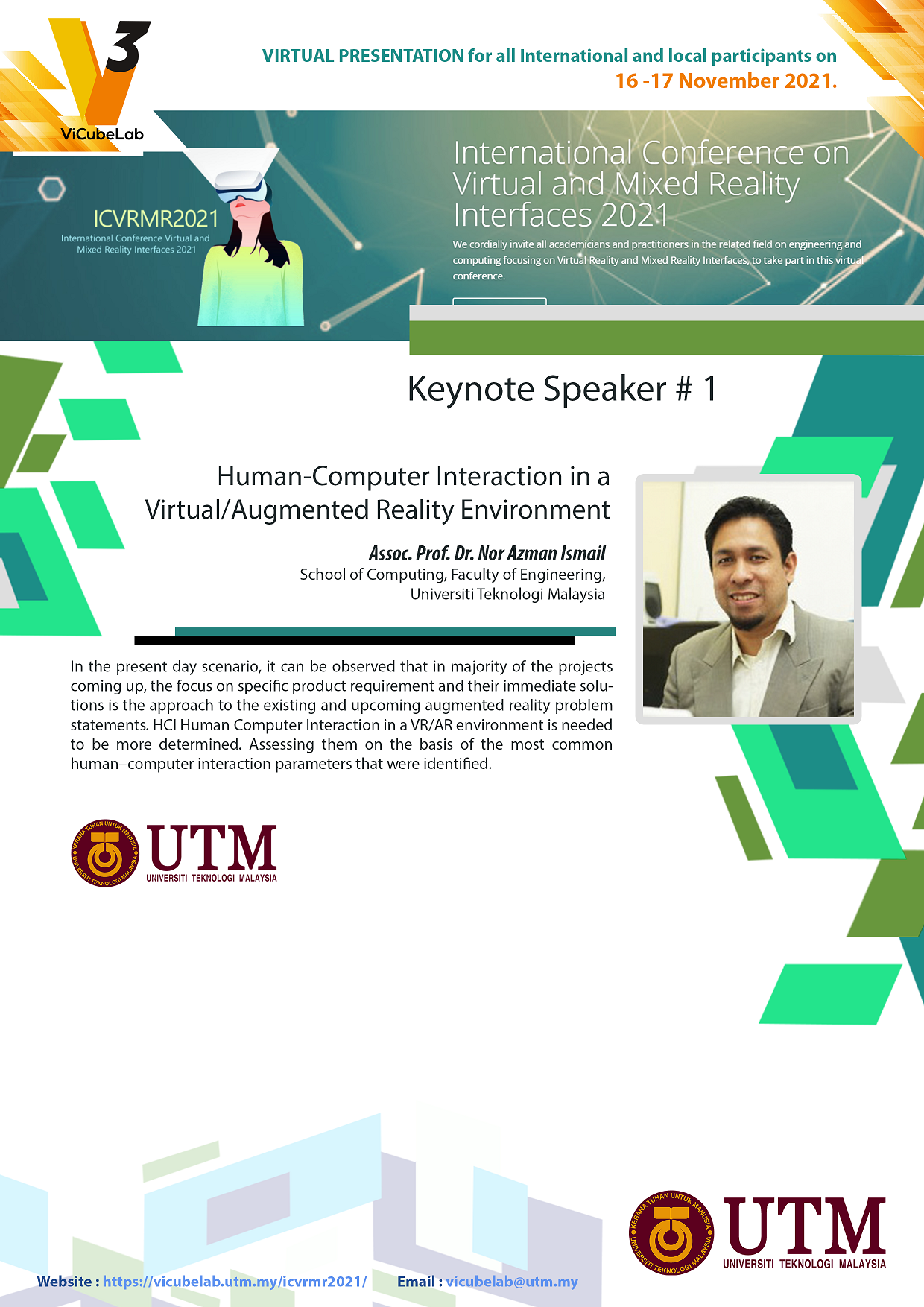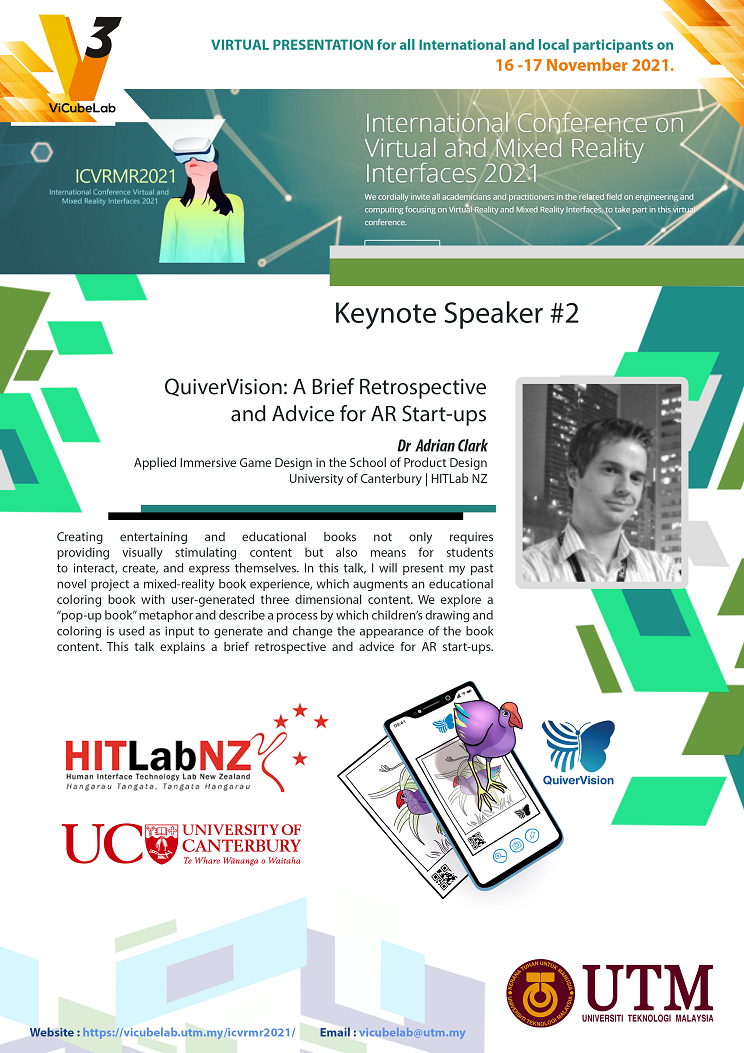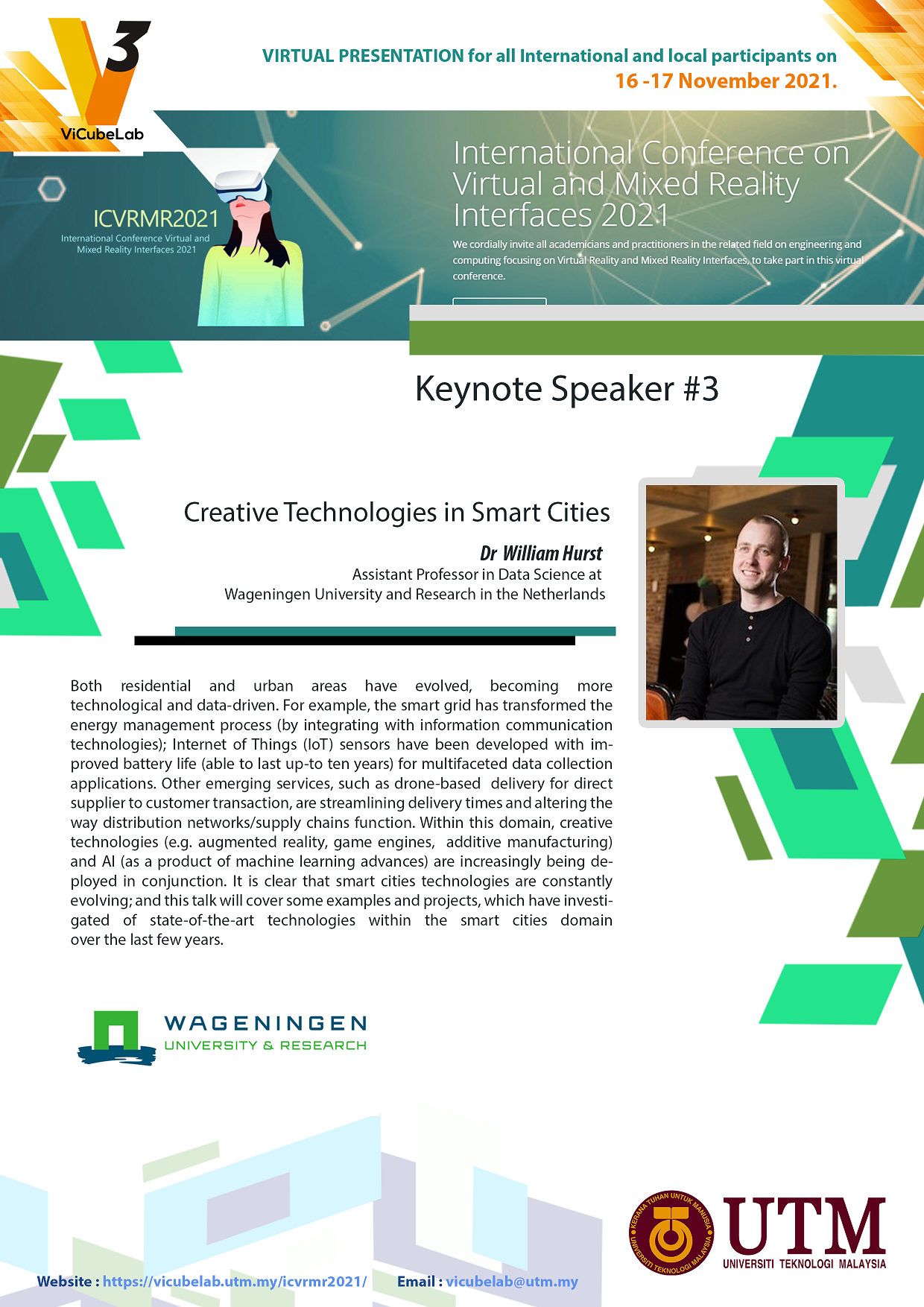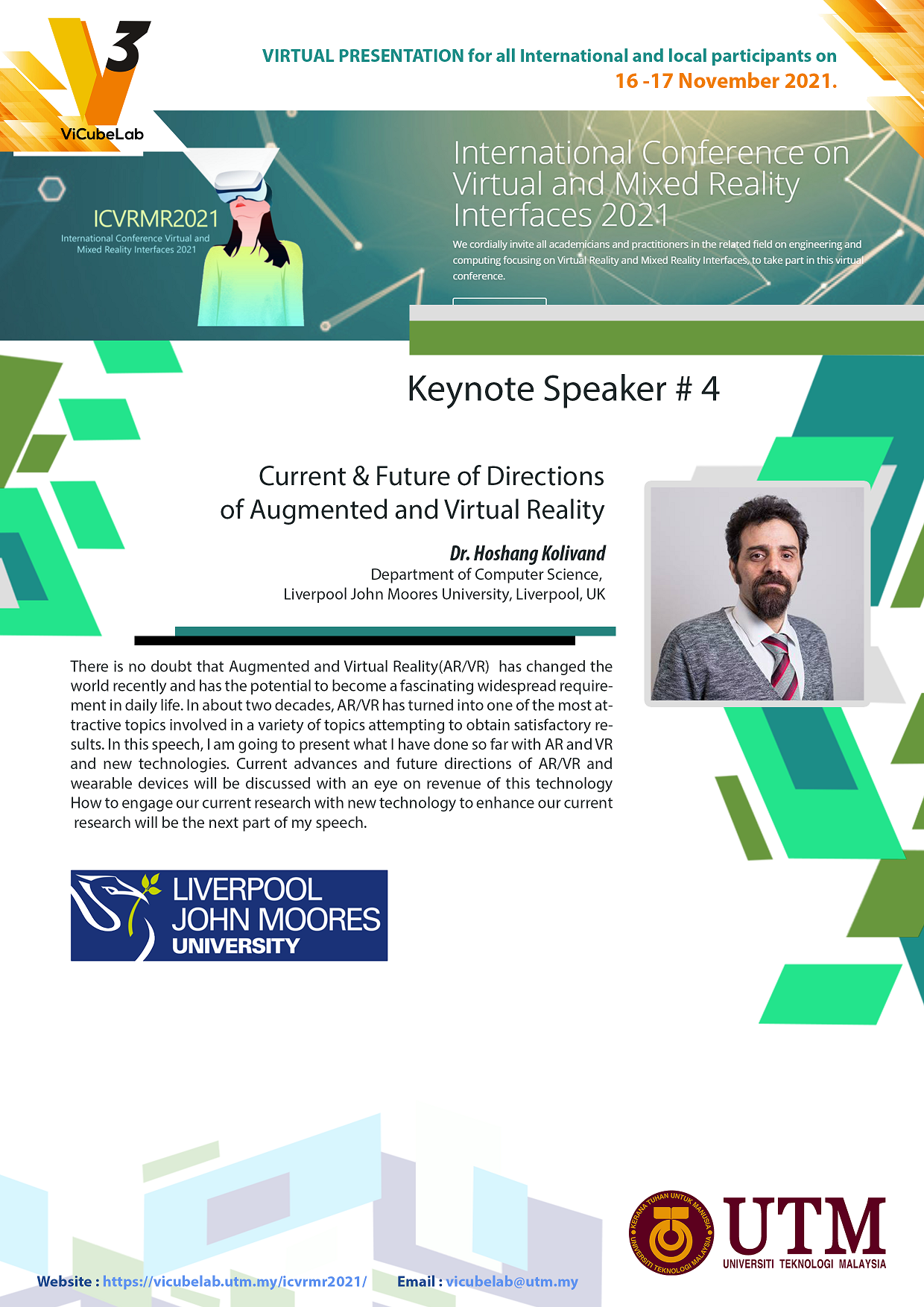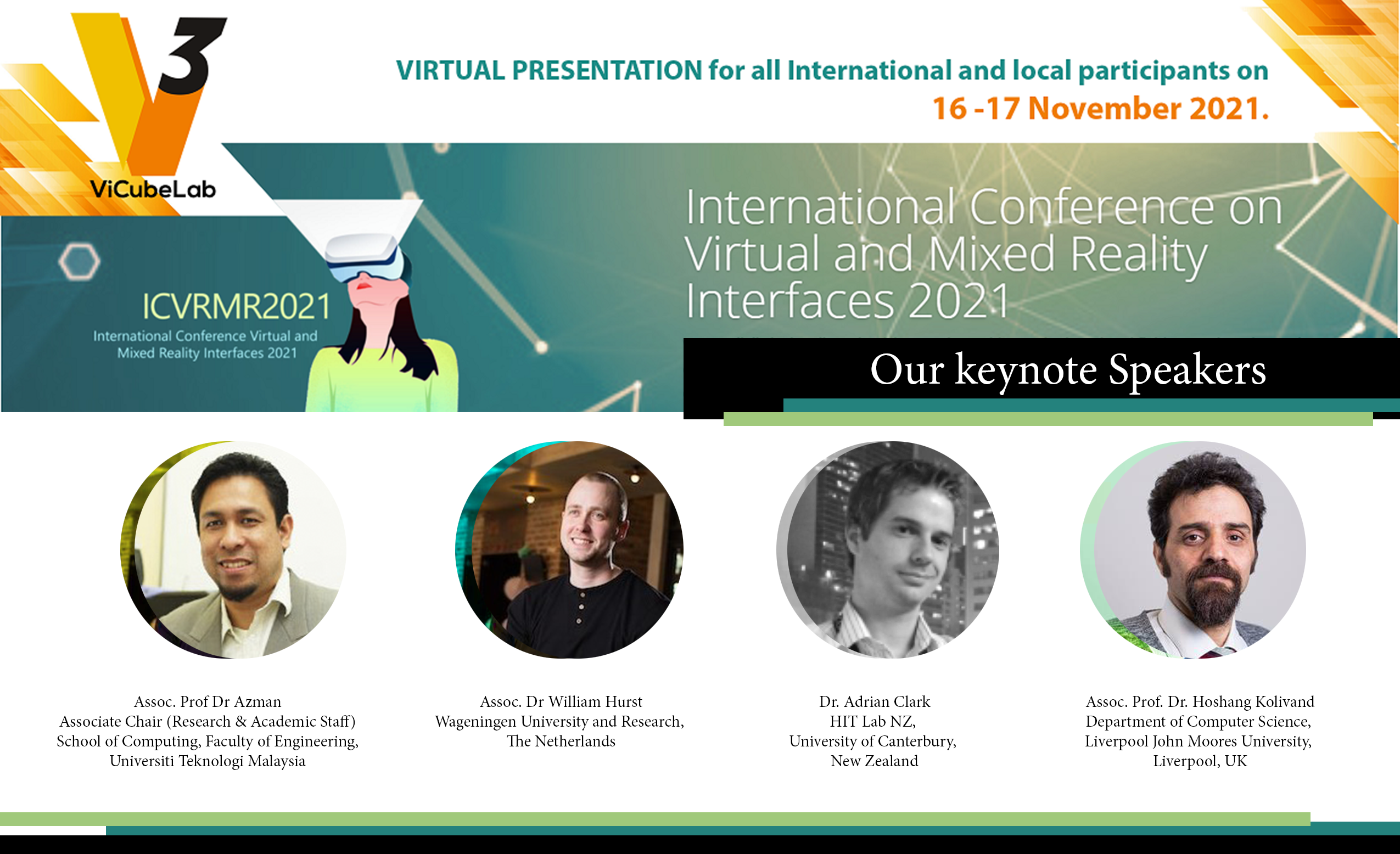Title: Human-Computer Interaction in a Virtual/Augmented Reality Environment
Name: Assoc. Prof. Dr. Nor Azman Ismail
Affiliation: School of Computing, Faculty of Engineering, Universiti Teknologi Malaysia
In the present day scenario, it can be observed that in majority of the projects coming up, the focus on specific product requirement and their immediate solutions is the approach to the existing and upcoming augmented reality problem statements. HCI Human Computer Interaction in a VR/AR environment is needed to be more determined. Assessing them on the basis of the most common human–computer interaction parameters that were identified.
Title: Current and Future of Directions of Augmented and Virtual Reality
Name: Assoc. Prof. Dr. Hoshang Kolivand
Affiliation: Department of Computer Science, Liverpool John Moores University, Liverpool, UK
There is no doubt that Augmented and Virtual Reality(AR/VR) has changed the world recently and has the potential to become a fascinating widespread requirement in daily life. In about two decades, AR/VR has turned into one of the most attractive topics involved in a variety of topics attempting to obtain satisfactory results. In this speech, I am going to present what I have done so far with AR and VR and new technologies. Current advances and future directions of AR/VR and wearable devices will be discussed with an eye on revenue of this technology How to engage our current research with new technology to enhance our current research will be the next part of my speech.
Title: QuiverVision: A Brief Retrospective and Advice for AR Start-ups
Name: Dr. Adrian Clark
Affiliation: HIT Lab NZ, University of Canterbury, New Zealand | Founder QuiverVision
Creating entertaining and educational books not only requires providing visually stimulating content but also means for students to interact, create, and express themselves. In this talk, I will present my past novel project a mixed-reality book experience, which augments an educational coloring book with user-generated three dimensional content. We explore a “pop-up book” metaphor and describe a process by which children’s drawing and coloring is used as input to generate and change the appearance of the book content. This talk explains a brief retrospective and advice for AR start-ups.
Title: Creative Technologies in Smart Cities
Name: Assoc. Dr William Hurst
Affiliation: Wageningen University and Research, The Netherlands
Both residential and urban areas have evolved, becoming more technological and data-driven. For example, the smart grid has transformed the energy management process (by integrating with information communication technologies); electronic health records are impacting the way in which patient data is processed and improving the efficiently of general hospital management procedures; Internet of Things (IoT) sensors have been developed with improved battery life (able to last up-to ten years) for multifaceted data collection applications. Other emerging services, such as e-grocery (which become a core supply solution for many during the Covid19 pandemic) and drone-based delivery for direct supplier to customer transaction, are streamlining delivery times and altering the way distribution networks/supply chains function. Within this domain, creative technologies (e.g. augmented reality, game engines, additive manufacturing) and AI (as a product of machine learning advances) are increasingly being deployed in conjunction.
